Readers: Reduce The number of Vehicle Lanes on Eads Bridge
The recent non-scientific Sunday Poll was about the Eads Bridge,specifically the configuration of the top level.
Tere are the visuals from the poll:
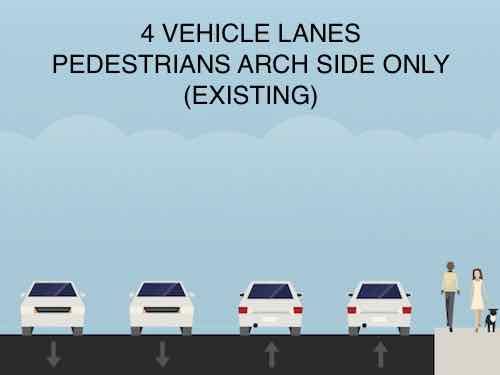
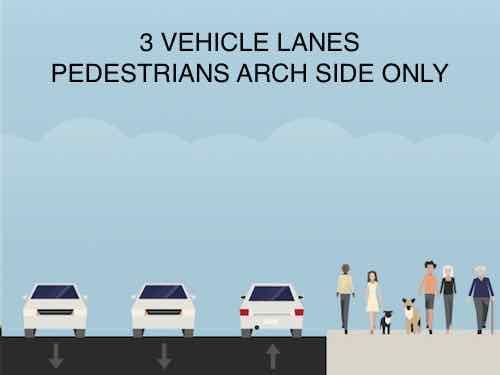
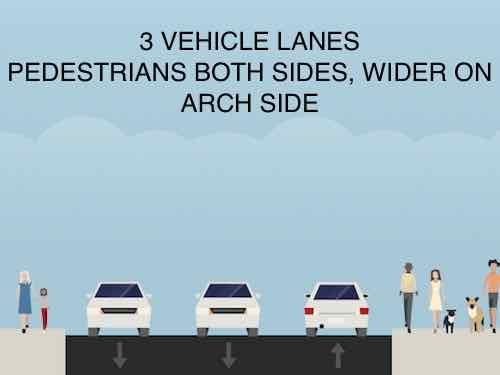
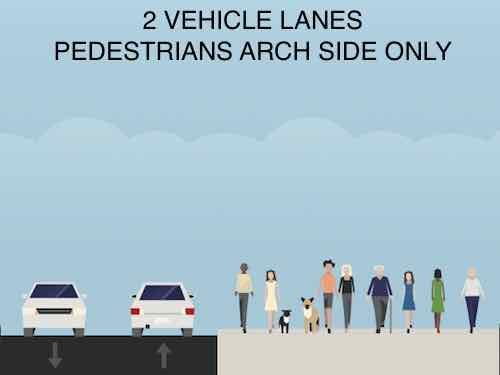
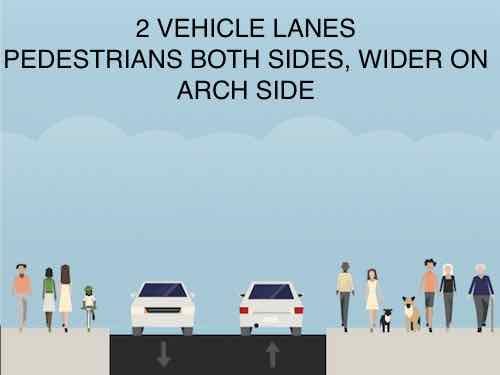
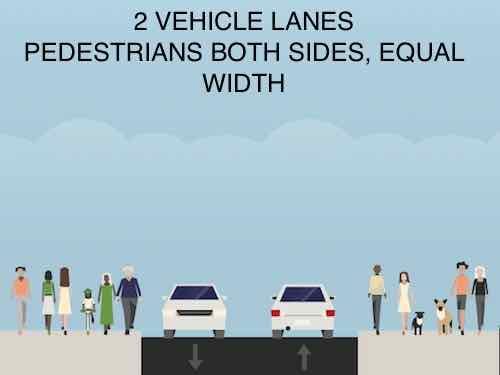
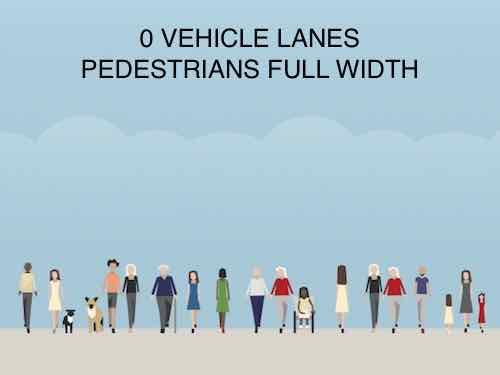
Again, those voting were self-selected so the results aren’t scientific or representative of the regional mindset — just of 46 individuals. Still, these 46 do represent a small segment of the region — those interested in local infrastructure.
Q: How should the top of the Eads Bridge be configured in the future?
- 4 vehicle lanes, pedestrians Arch side only (existing) 12 [26.09%]
- 3 vehicle lanes, pedestrians Arch side only 5 [10.87%]
- 3 vehicle lanes, pedestrians both sides, wider on Arch side 5 [10.87%]
- 2 vehicle lanes, pedestrians Arch side only 3 [6.52%]
- 2 vehicle lanes, pedestrians both sides, wider on Arch side 14 [30.43%]
- 2 vehicle lanes, pedestrians both sides, equal width 3 [6.52%]
- 0 vehicle lanes, pedestrians full width 1 [2.17%]
- Unsure/No Answer 3 [6.52%]
Just over a quarter supported the maximum number of vehicle lanes (4). A smaller number (21.74%) supported reducing driving lanes from 4 to 3. A whopping 43.47% voted to reduce vehicle lanes from the existing 4 to 2. Only one person (2.17%) voted to eliminate cars altogether.
I support the option that happened to receive the most votes: “2 vehicle lanes, pedestrians both sides, wider on Arch side.” Why?
The pedestrian width is barely the minimum required while 4 vehicle lanes greatly exceeds demand. While I recognize the greatest pedestrian demand is on the Arch side, the North side is also interesting,
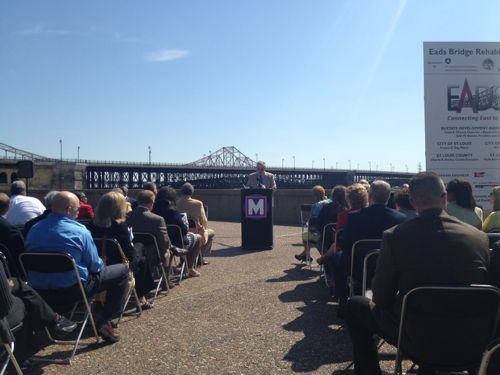
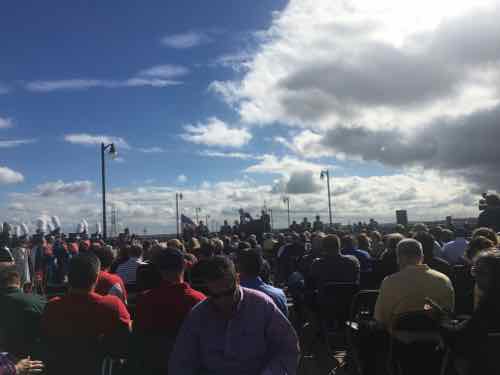
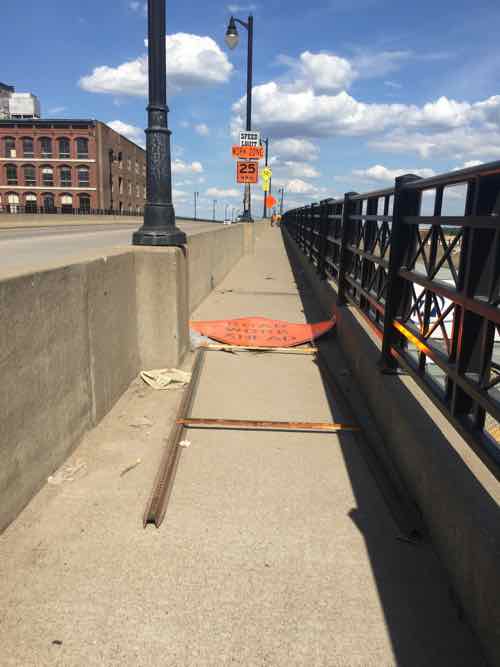
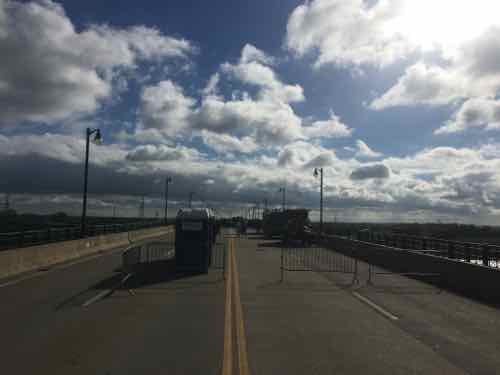
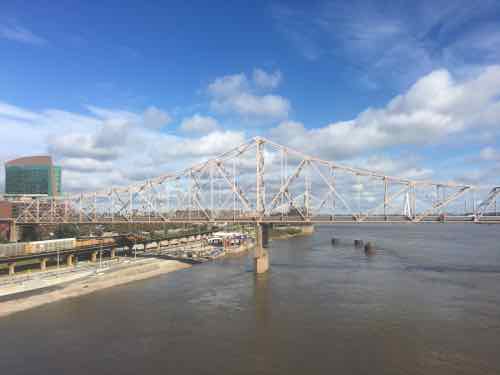
So why not just make it all pedestrian? That would be as bad as it is currently, just in a different way. When driving, I like to use the Eads Bridge to cross the Mississippi River — it is the only non-interstate bridge crossing the river downtown.
If anything, I think it is worthwhile to examine the configuration of the top deck and see if a change should be made in the future.
— Steve Patterson